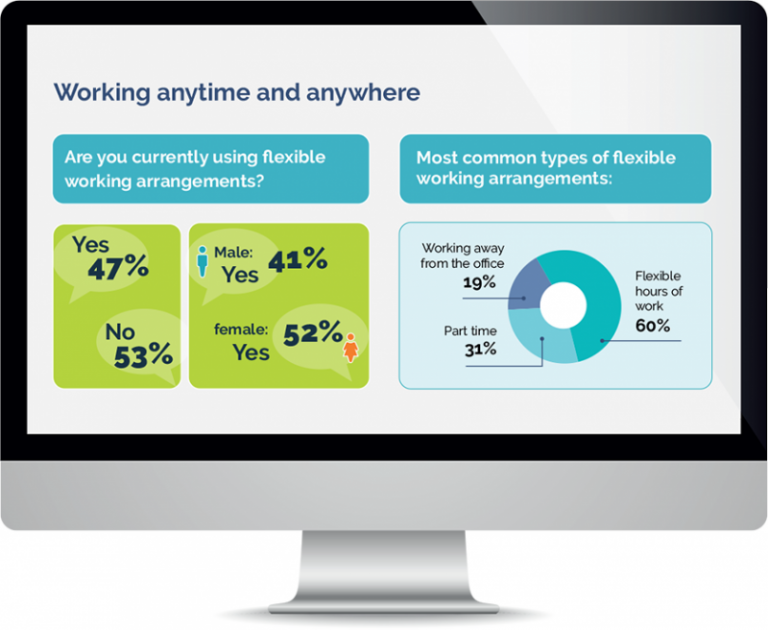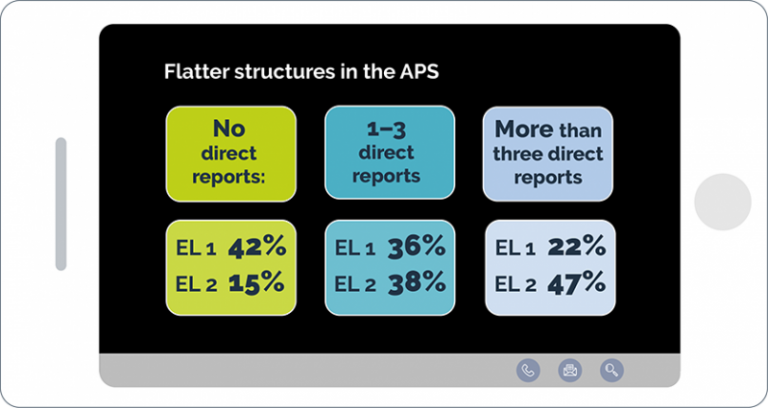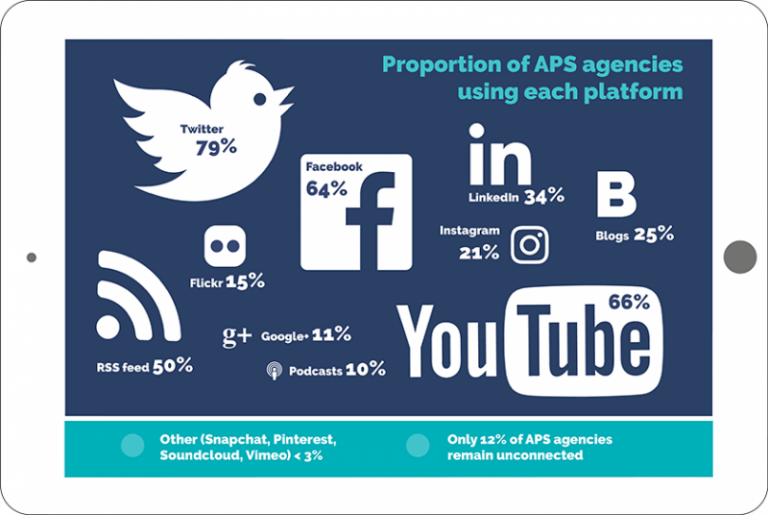Working anytime and anywhere
The APS has long recognised the value of flexible working arrangements. Bargaining has delivered enterprise agreements that support greater workplace flexibility. Employees and agencies are benefiting as they shift more rapidly to changing circumstances. This includes the ability to make individual flexibility arrangements over a wider range of matters.
Balancing the Future: APS Gender Equality Strategy 2016–19 highlights the importance of flexible work to all employees, regardless of gender, classification or role. The strategy requires APS agencies to review roles and adopt a flexible by default approach.
Almost half of 2017 APS employee census respondents report using flexible work arrangements. More than 80 per cent agree their supervisor actively supports flexible work arrangements by all employees, regardless of gender (Figure 13).
Figure 13: Flexible work in the APS

Some significant differences exist in how different flexible working arrangements are used by women and men. Women are more likely to use part-time working hours and purchased leave, while men are more likely to use flexible working hours or work away from the office.
Of respondents not using flexible work arrangements, 55 per cent say they do not need to. Twenty-one per cent note that their role’s operational requirements prevent them from doing so.
Flexible work arrangements also support strategies to reduce unscheduled absence. Results from the 2017 APS employee census confirm that employees who believe their supervisor supports flexible work arrangements take fewer personal leave days than those who feel their supervisor does not support such arrangements.
Flatter structures in the APS
Across the APS, agencies are working towards flatter management structures and broader spans of control. Seventy-five per cent of agencies implemented initiatives in 2016–17 to improve their management structures. Initiatives included training managers to recognise, review and implement different ways of working and modify workforce structures to increase efficiency.
APS agencies and the work they do can differ substantially. Some employ highly-specialised employees with specific subject matter expertise who perform at EL standard but without management responsibilities. In a significant number of agencies, the vast majority of EL employees had more than three direct reports. As Figure 14 shows, on average, 42 per cent of EL 1 employees, and 15 per cent of EL 2 employees across the APS have no direct reports. Only 22 per cent of EL 1 and 47 per cent of EL 2 employees, on average, have more than three people reporting directly to them.
Figure 14: Direct reports to EL managers

Connectivity, citizen engagement and new information channels
Traditional means of sharing information are now complemented by new channels. Information sharing is more efficient than ever. These new channels support the delivery of high quality services and better outcomes for the Australian public.
Connectivity
The APS uses technology to aid connectivity. This includes the National Telepresence System (NTS), supported by the Department of Finance. With videoconferencing facilities in more than 150 locations around Australia, ministers and senior officials can communicate and collaborate without the time and costs associated with travel.
The APS has embraced technology to facilitate digital information sharing. The Department of Finance provides and manages dedicated communication networks to connect government organisations. The data carriage service is a national network connecting more than 140 sites across Australia. These services provide cost effective and secure means of connecting agencies and facilitating information sharing.
Citizen engagement
Government agencies have a responsibility to engage constructively with citizens. Engaging citizens in policy development offers a valuable source of ideas for the APS.
In December 2016, Australia’s first Open Government National Action Plan10 was released. Within the plan was a commitment to design and adopt a whole of government framework that embeds meaningful, open, public and multi-stakeholder participation into government policy development and service delivery.
The Digital Transformation Agency is developing whole-of-government platforms that have the potential to improve how APS agencies connect and engage with the public. Govpass is one platform that aims to make it easier for Australians to prove who they are when using government services online. In turn, this will allow more government services to be made available online and accessed in a safe and secure way.
New information channels
Technology-facilitated connectivity has enabled the rise of new information channels. Online search engines, social media websites and mobile phone apps are more commonly being used to source information in place of more traditional media channels. APS agencies are readily employing these new information channels to communicate and engage with the Australian public.
Most APS agencies have at least one presence on social media. Seventy-nine per cent of agencies have a Twitter account, while 66 per cent have a presence on YouTube (Figure 15).
Many agencies have mobile phone apps. This includes the Australian Securities and Investments Commission, the Department of Communications and the Arts and the Department of Veterans’ Affairs. The apps offer a new way to provide information to users. They also offer new ways for the public to access government services.
Figure 15: Information channels

10 https://ogpau.pmc.gov.au/australias-first-open-government-national-action-plan-2016–18



